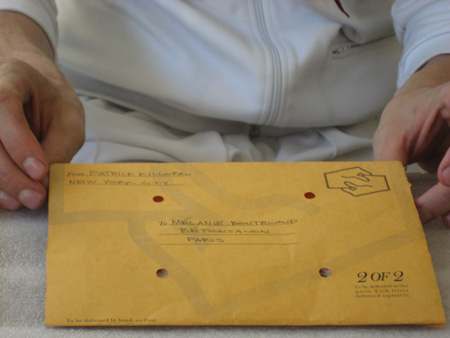Beaver plague in fashion
Saturday, October 11th, 2008
This summer in Paris, Le Bon Marché—considered the first department store, it opened in 1876 in a building designed by Gustave Eiffel—had an exhibition and section devoted to young fashion designers from Buenos Aires. Among the labels included was Juana de Arco, founded and directed by the Argentine designer Mariana Cortés. On exhibition were items of her newest Winter line (seasons are reversed in the Southern Cone). The theme, Skiing. I attended the fashion show that was part of BAF in February. The walk was tackled as performance: models slipped as if walking on ice, tripped as stumbling on snow, interrupting the gait as display and breaking the characteristic cool of these shows. The clothing design and fabric patterns were also playful. In a continuation of her research in regional history, its culture and ecology, Mariana’s was inspired by her research into Peruvian, Bolivian and Argentine traditional wear. The line is not stuck in the past, though.
Mariana Cortés designs and produces her own fabrics for Juana de Arco, whether these are knitted wools she makes or cottons she prints. While inspired by indiginous South America, the fabric patterns of her Winter line have a digital-kick, something that could be drawn from 1980 video games, what is considered today low-tech. (Not surprisingly, there is a cult-like following of Juana de Arco’s fashion in Japan.) But taking in mind that the loom is considered the first computer, this is not too far apart. Jackets are saturated with Bolivian wool-string pom poms. Peruvian inspired sweaters are here dresses or pants. Other clothing items are made with beavers here and here silk-screened in the fabric. Oh, yes, and that makes reference to the ecology of Argentina. “What?” I asked, perplexed, knowing beavers are not native to South America let alone to her homeland! Mariana had an explanation, a story really, as there is for every clothing item she makes: During the Peron era, a couple dozen Canadian beavers were imported to Argentina in hopes the industry there would cultivate them to use their furs for high-end fashion items and accessories. That industry never really flourished, and, as you can imagine, the animal was never attended. Now, there are about 200,000 beavers there—what can be technically called a beaver plague.

